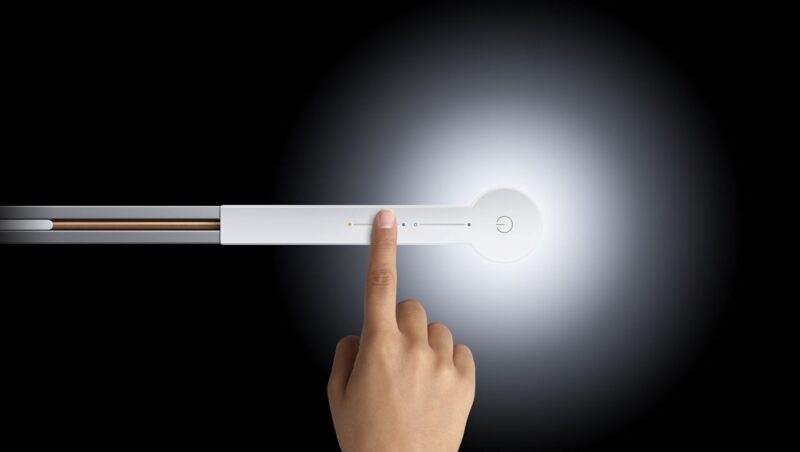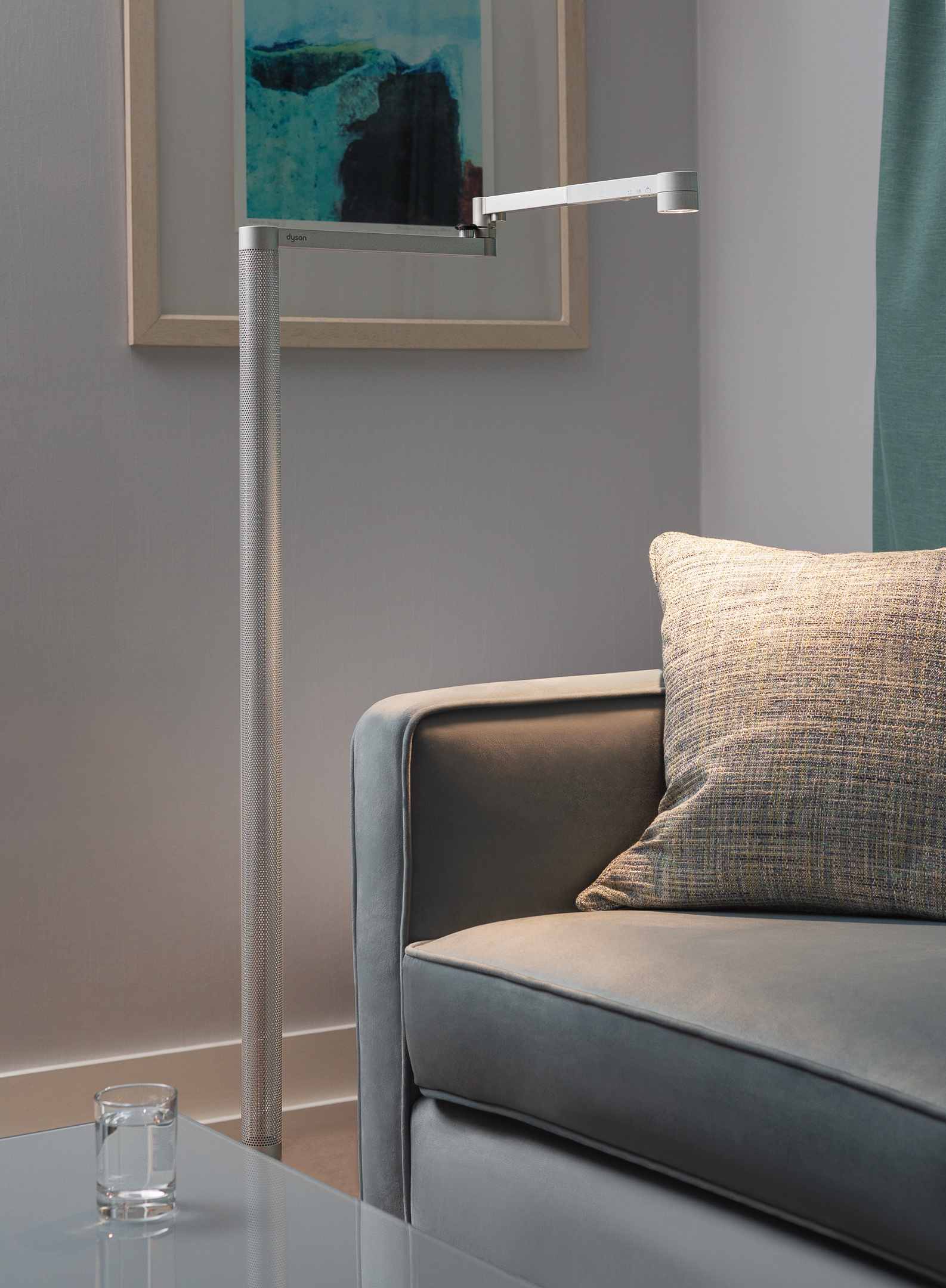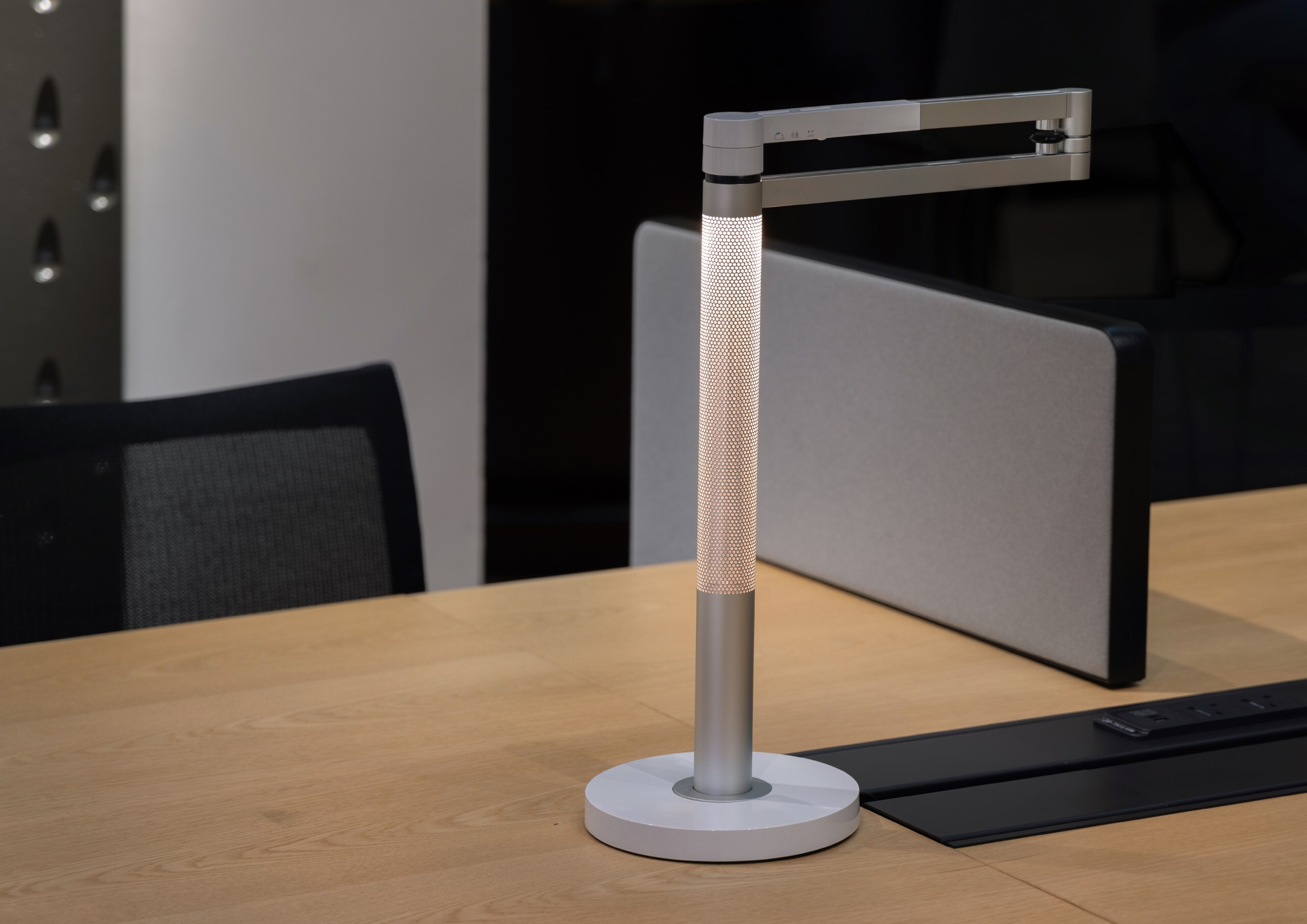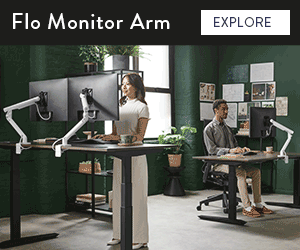
Lighting plays a vital role in every aspect of our daily lives. As businesses continue to navigate rising energy costs, lighting has emerged as a critical area for improving energy efficiency with the potential to reduce lighting costs by as much as 85 to 90%(1) by using efficient lighting solutions. The type of light bulb used can impact the time and cost spent on maintenance which is particularly important in office buildings where costs saving measures are prevalent(2).
Choosing lighting with Heat Pipe technology, which cools LEDs, ensures quality for up to 60 years and reduces bulb replacements. By adopting smarter lighting solutions, businesses can reduce energy consumption while enhancing the overall environment for occupants. Dyson shares how businesses can adopt smarter lighting solutions that not only help to cut costs but also support inhabitants’ wellbeing.
 Images courtesy of Dyson
Images courtesy of Dyson
Natural Lighting
For buildings and facilities managers, bringing the outside in to create a feel of relaxation, productivity, and creativity remains a key priority. In many workplaces, lighting can feel clinical with a ‘one size fits all’ approach to lighting which creates strain on the eyes. By creating bespoke lighting options in individual workspaces, a user can adjust the lighting to suit their specific needs.
Motion activated lighting
Many buildings across the country are now equipped with motion activated lighting, reducing costs, improving energy efficiency and avoiding unnecessary usage. By investing in lighting that is also controllable by an app, buildings and facilities managers have the flexibility to turn off lights remotely at the touch of a button adding an additional level of peace of mind.
Reducing time spent changing light bulbs
Changing light bulbs regularly takes time, investment and organisation. Fluorescent lighting can be inefficient, waste light and use costly-to-replace bulbs. Without proper cooling, LED bulbs can quickly overheat, causing fading, discolouring and them to work efficiently. Lights such as the Dyson Solarcycle task light instead uses Heat Pipe technology that effectively cools the LED and protects the light quality for 60 years(3). In turn, this allows the user to reliably adjust its colour and brightness without flickering bulbs and outages.
 Images courtesy of Dyson
Images courtesy of Dyson
Wellness & Neurodiversity & Circadian Rhythm
We know that prioritising wellness and mental health has become paramount for businesses. Recognising the importance of fostering a happy, healthy, and supportive work environment, companies are placing increased emphasis on these aspects. This strategic focus not only contributes to employee satisfaction but also plays a significant role in talent retention and attraction. Acknowledging that individuals have diverse needs and perceptions regarding wellness and mental health, businesses must remain adaptable to meet these varied requirements effectively.
An often overlooked yet influential aspect of this is the lighting environment within a workspace. While lighting may seem inconspicuous, it profoundly impacts the wellness of employees and users alike. Low quality light can cause negative side effects such as migraines, headaches and eyestrain. By giving employees, the option to adapt something as simple as lighting to suit their needs will have positive effects on not only their wellbeing, but also their productivity.
 Image courtesy of Dyson
Image courtesy of Dyson
We spend about 90% of our time indoors(4), exposing ourselves to artificial lighting more often than not, with many neglecting to think about how this can affect their sleep cycle. Light is a primary external factor influencing sleep patterns. While the notion that darkness aids sleep is commonly understood, the relationship between light and sleep is far more intricate.
Light plays a pivotal role in regulating the body’s circadian rhythm, the internal clock dictating periods of wakefulness and rest. Moreover, it impacts the production of melatonin, a hormone crucial for promoting sleep. The daily exposure to light, including its quality, timing, and duration, significantly impacts sleep quality. Understanding the intricate connections between light and sleep empowers individuals to optimise their working environment for consistent and restorative sleep.
 Images courtesy of Dyson
Images courtesy of Dyson
Strategic lighting design and innovation go beyond energy savings. By adopting human-centric lighting solutions, businesses can create environments that not only enhance their bottom line but also support the health and productivity of their employees. Lighting, when done right, can be a powerful tool in fostering a happier, healthier, and more efficient workplace.
To learn more on how to create a workspace that enhances users’ productivity and well-being with bespoke lighting solutions, visit Dyson technology’s business hub here


 Images courtesy of Dyson
Images courtesy of Dyson Images courtesy of Dyson
Images courtesy of Dyson Image courtesy of Dyson
Image courtesy of Dyson Images courtesy of Dyson
Images courtesy of Dyson





















